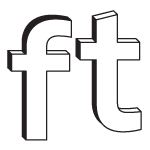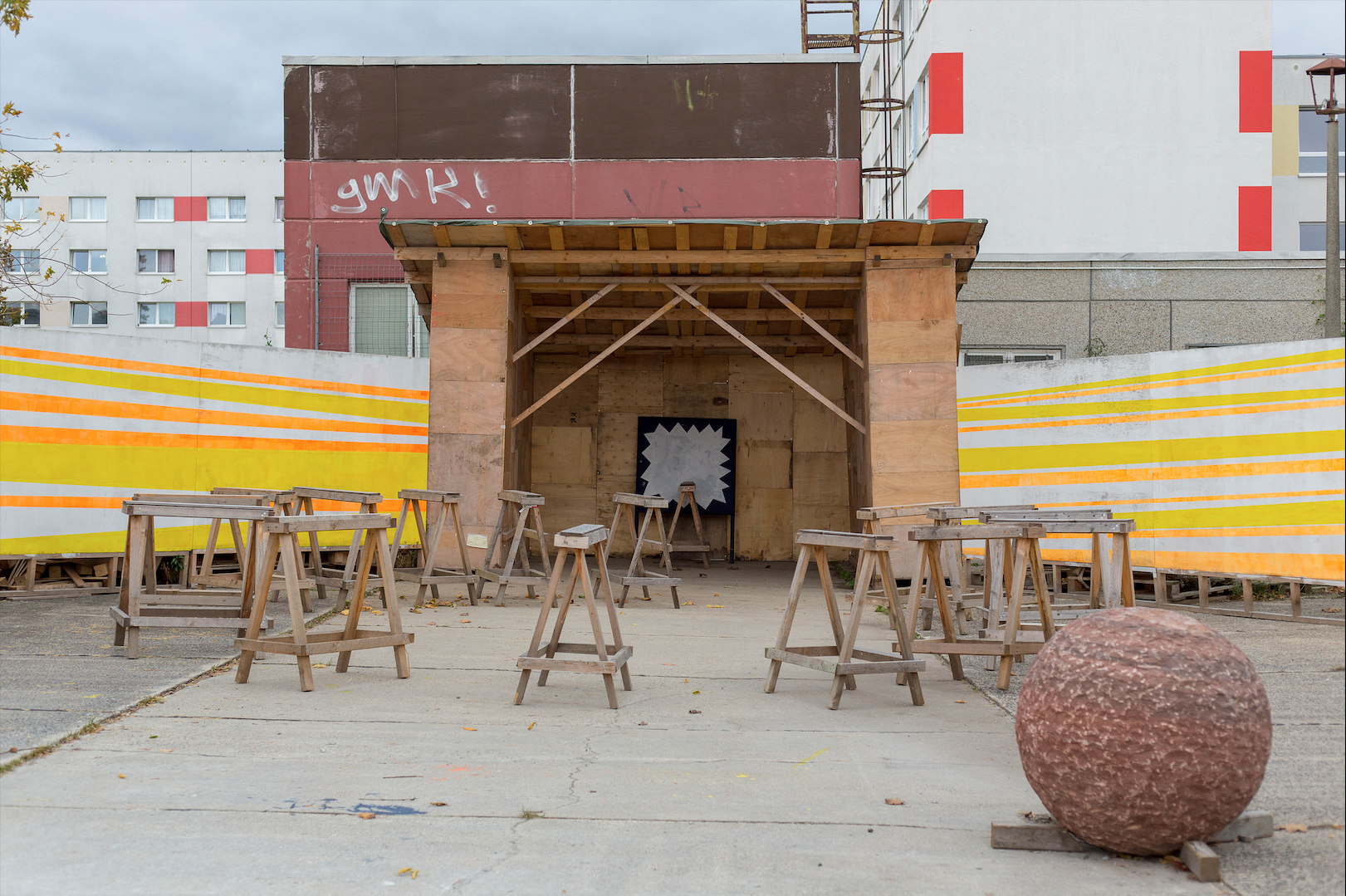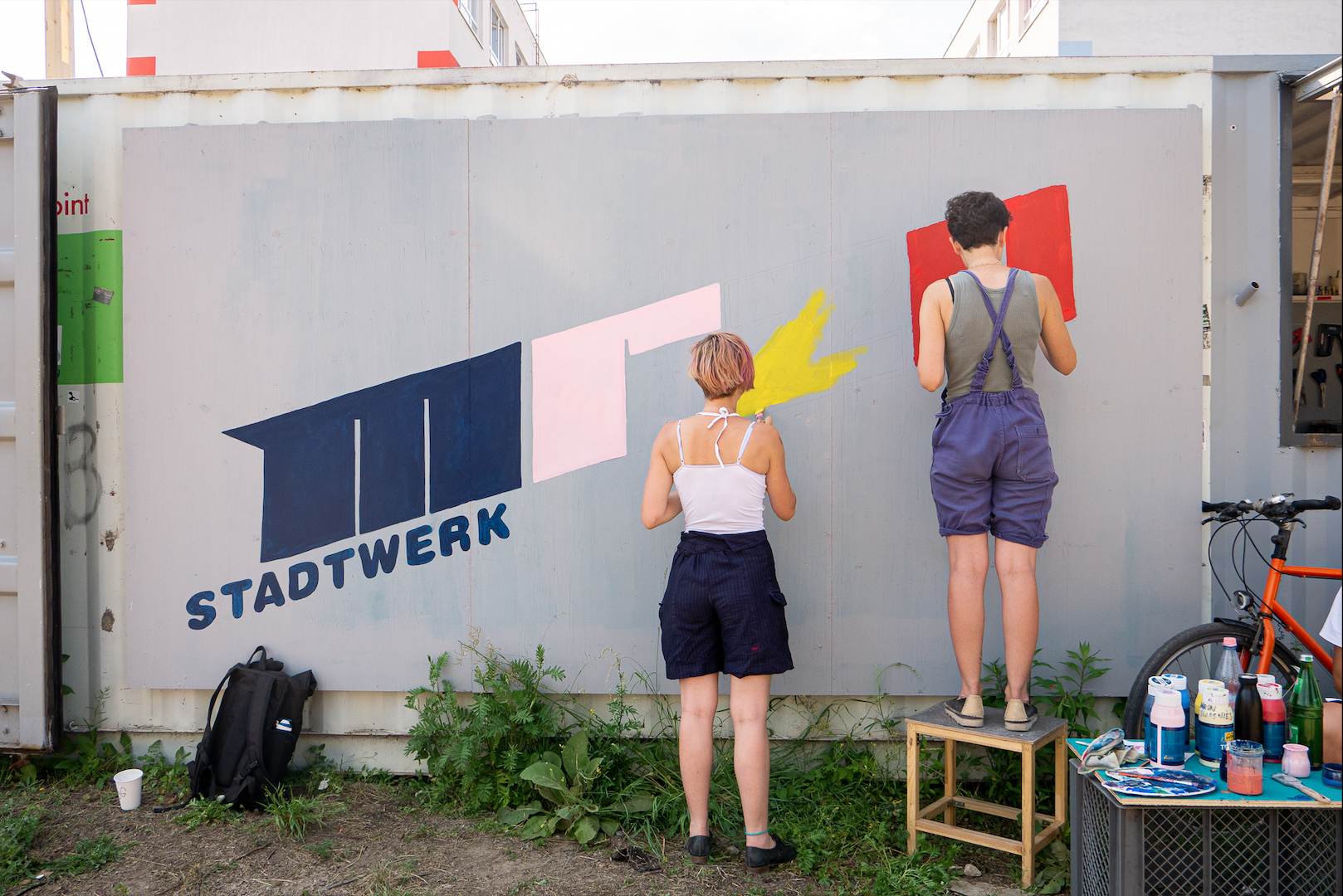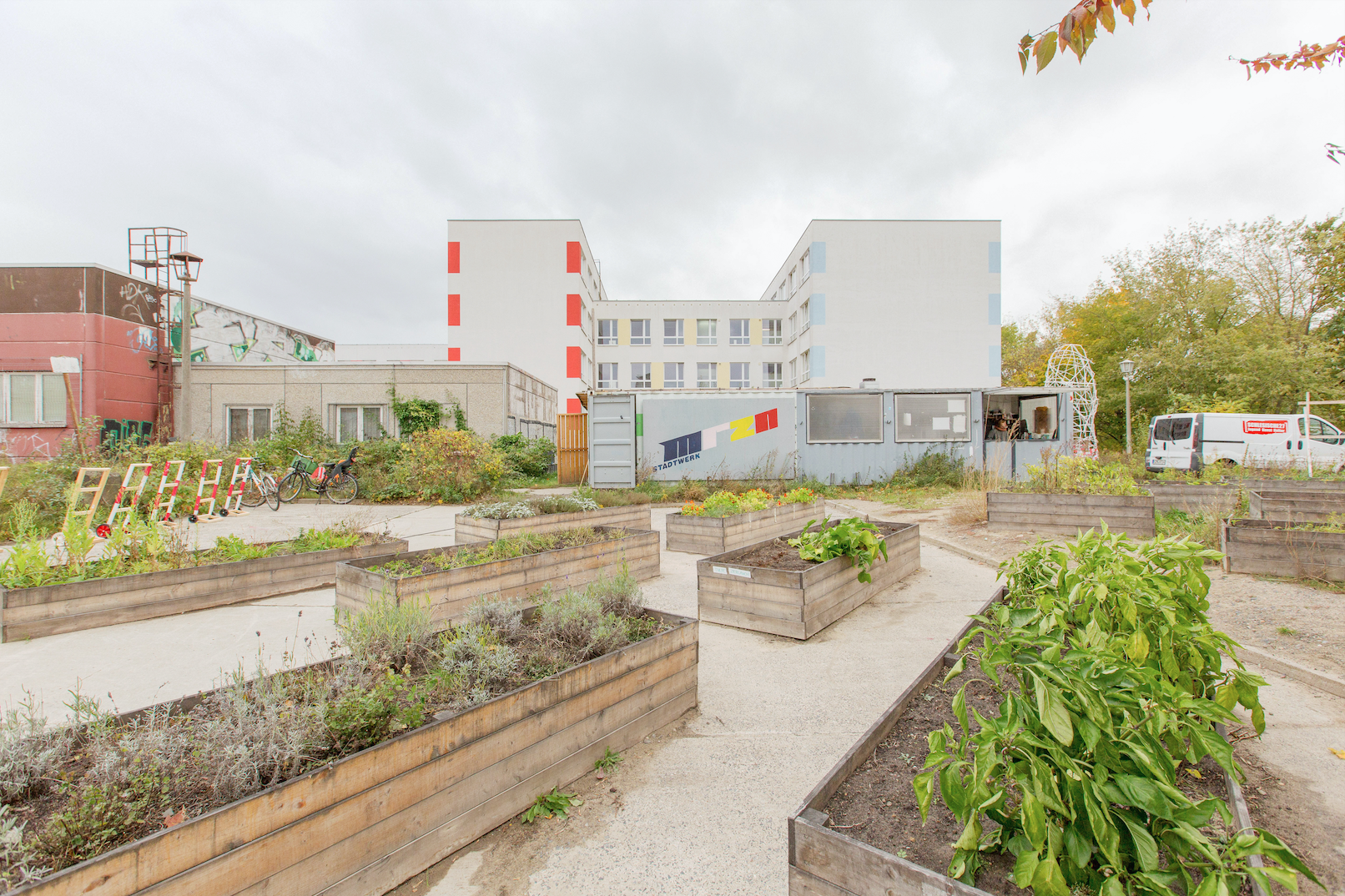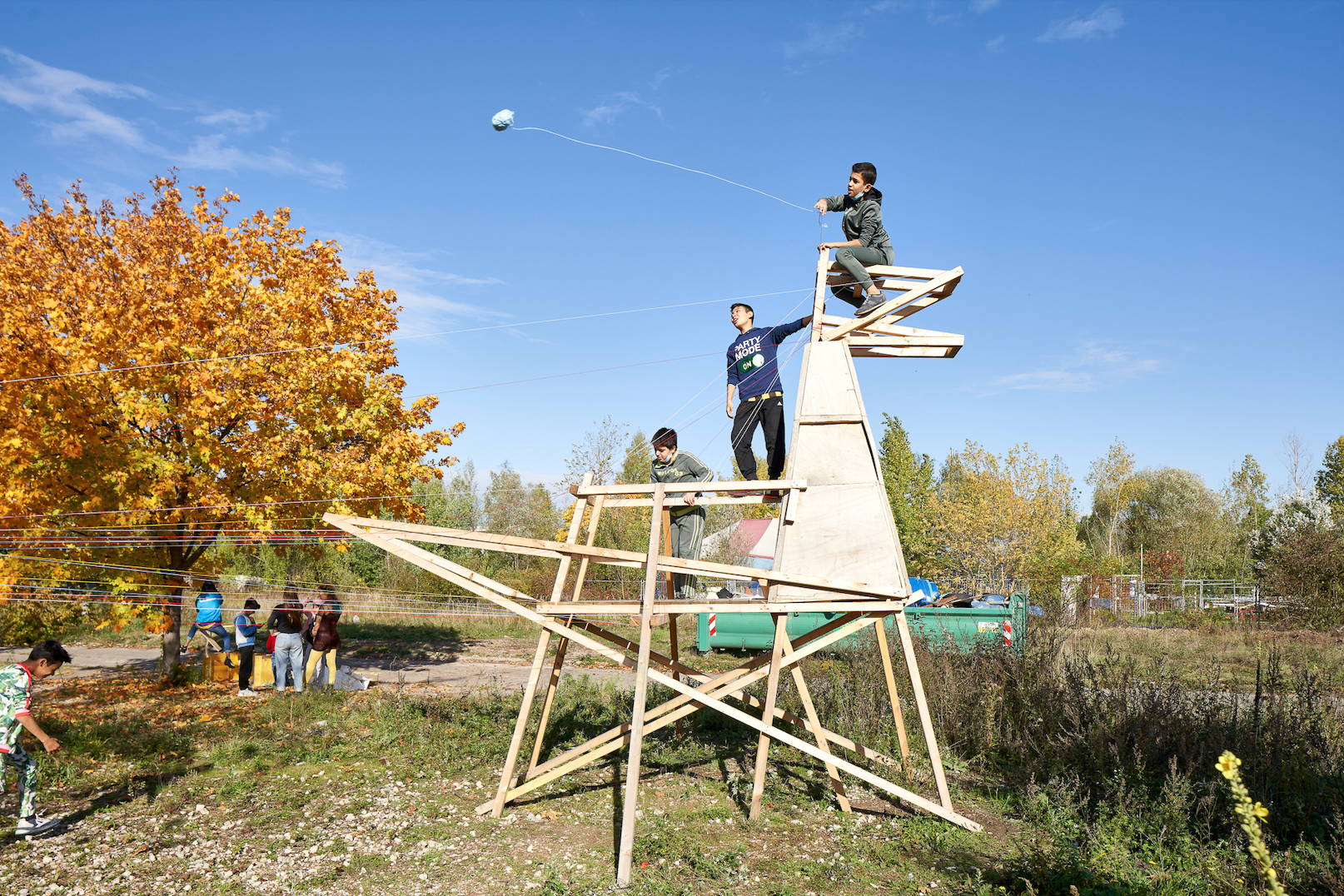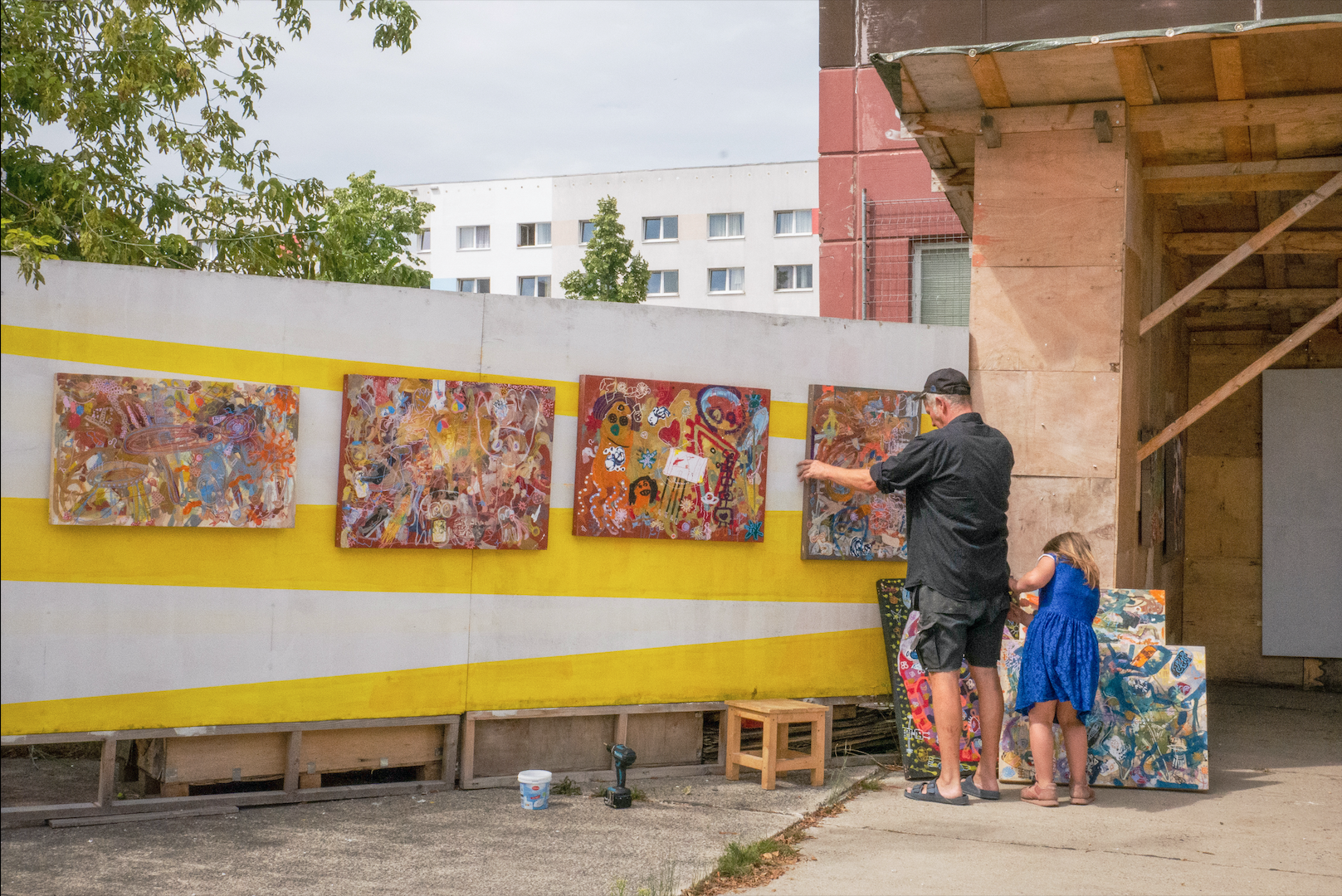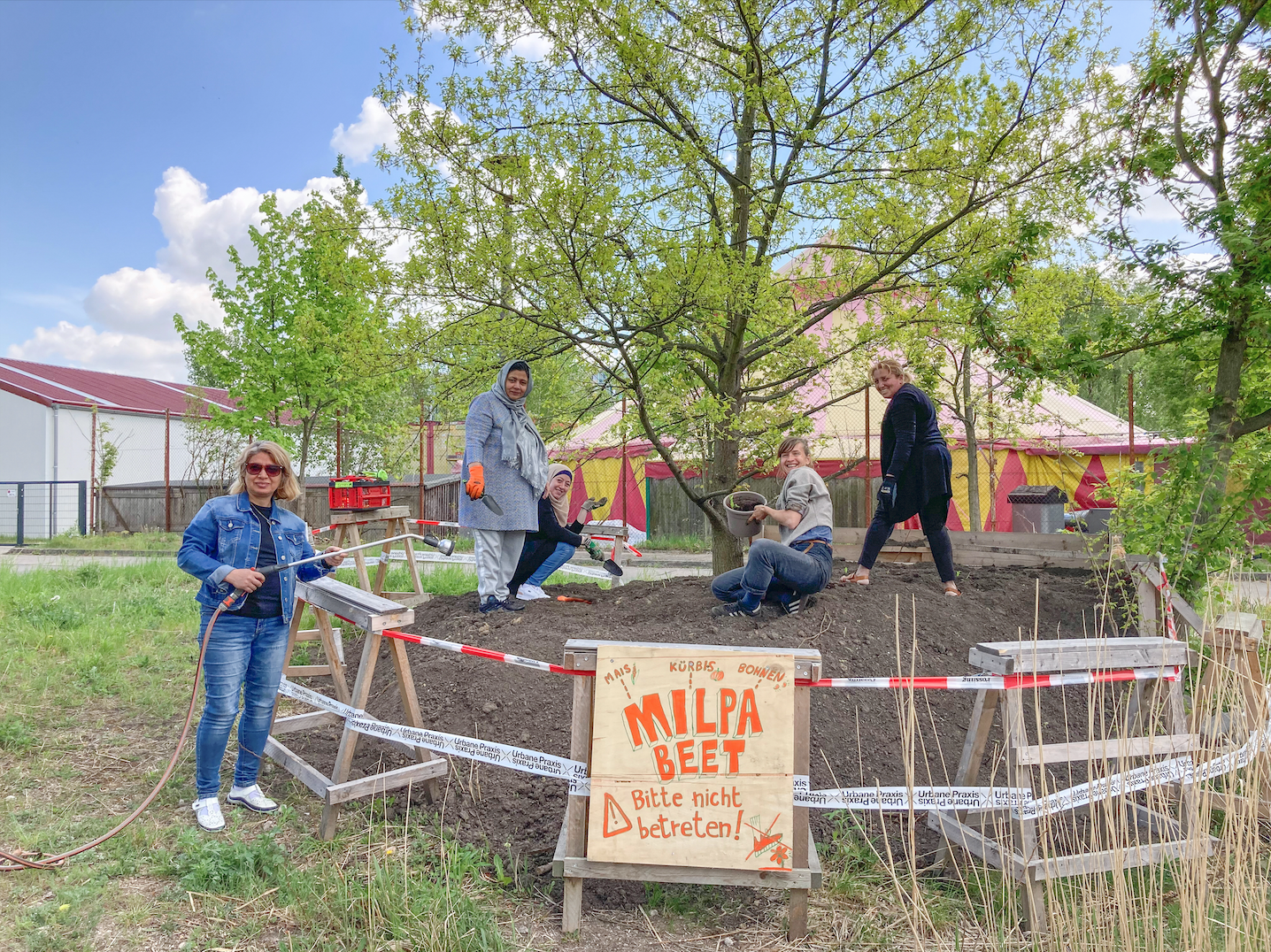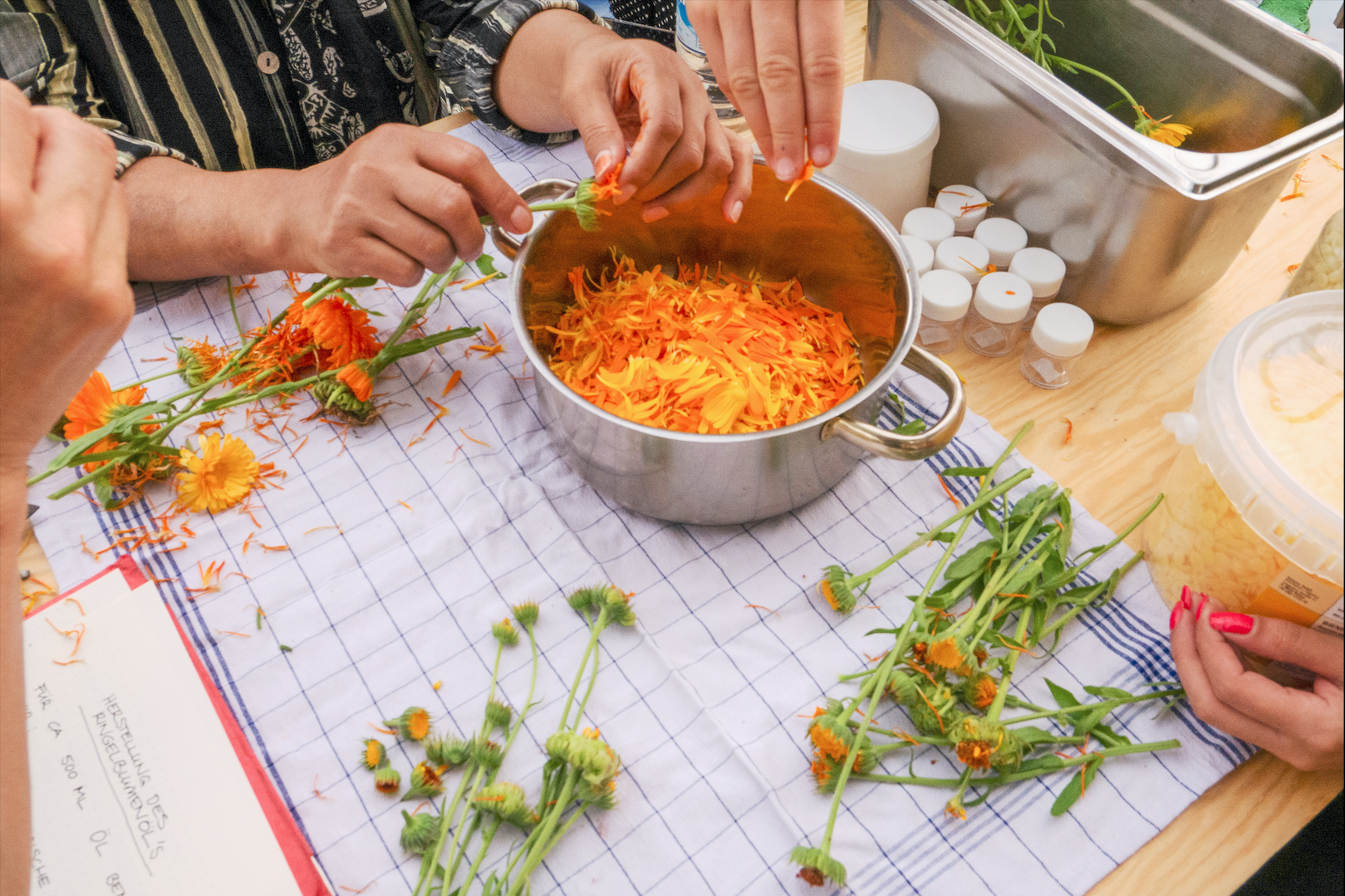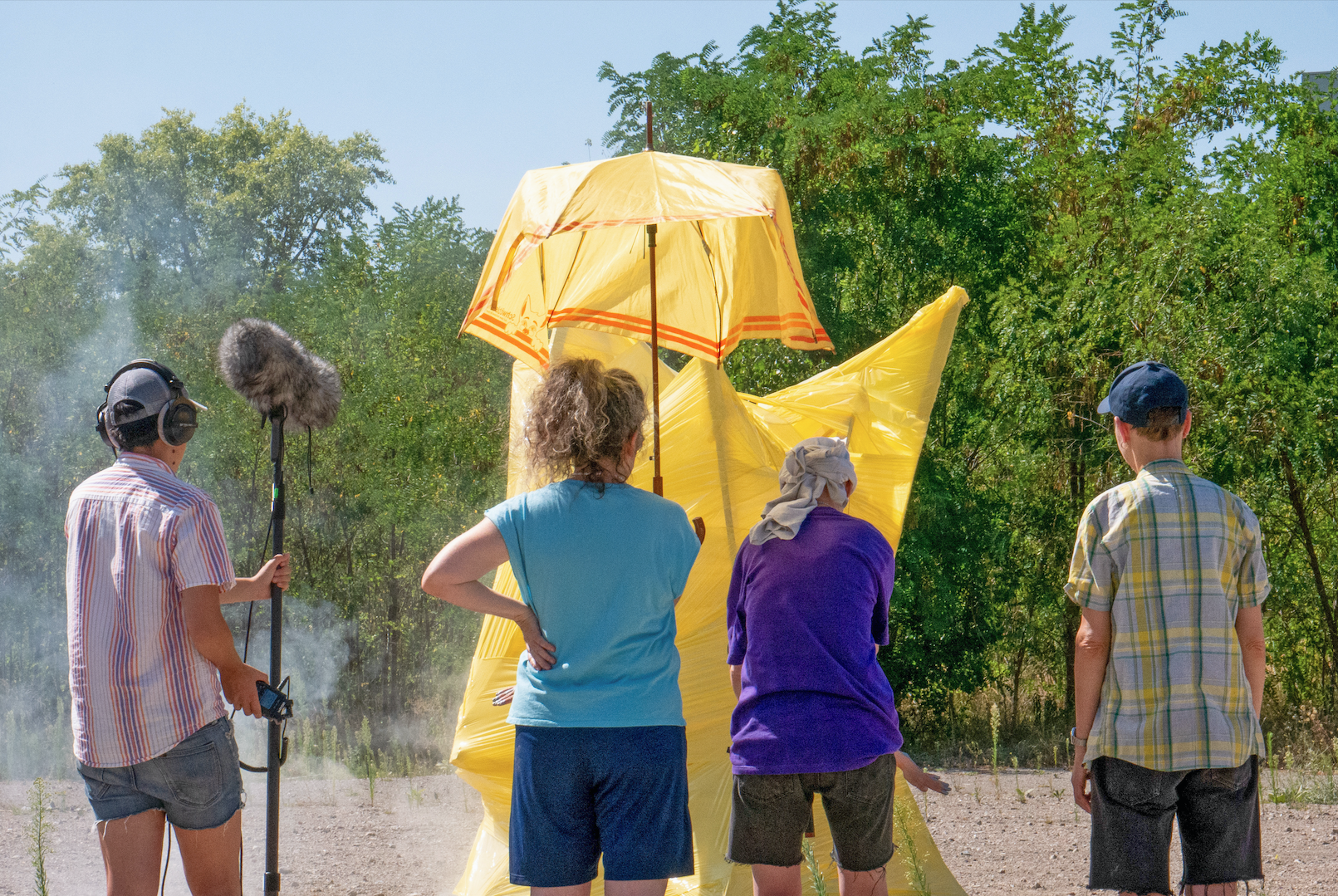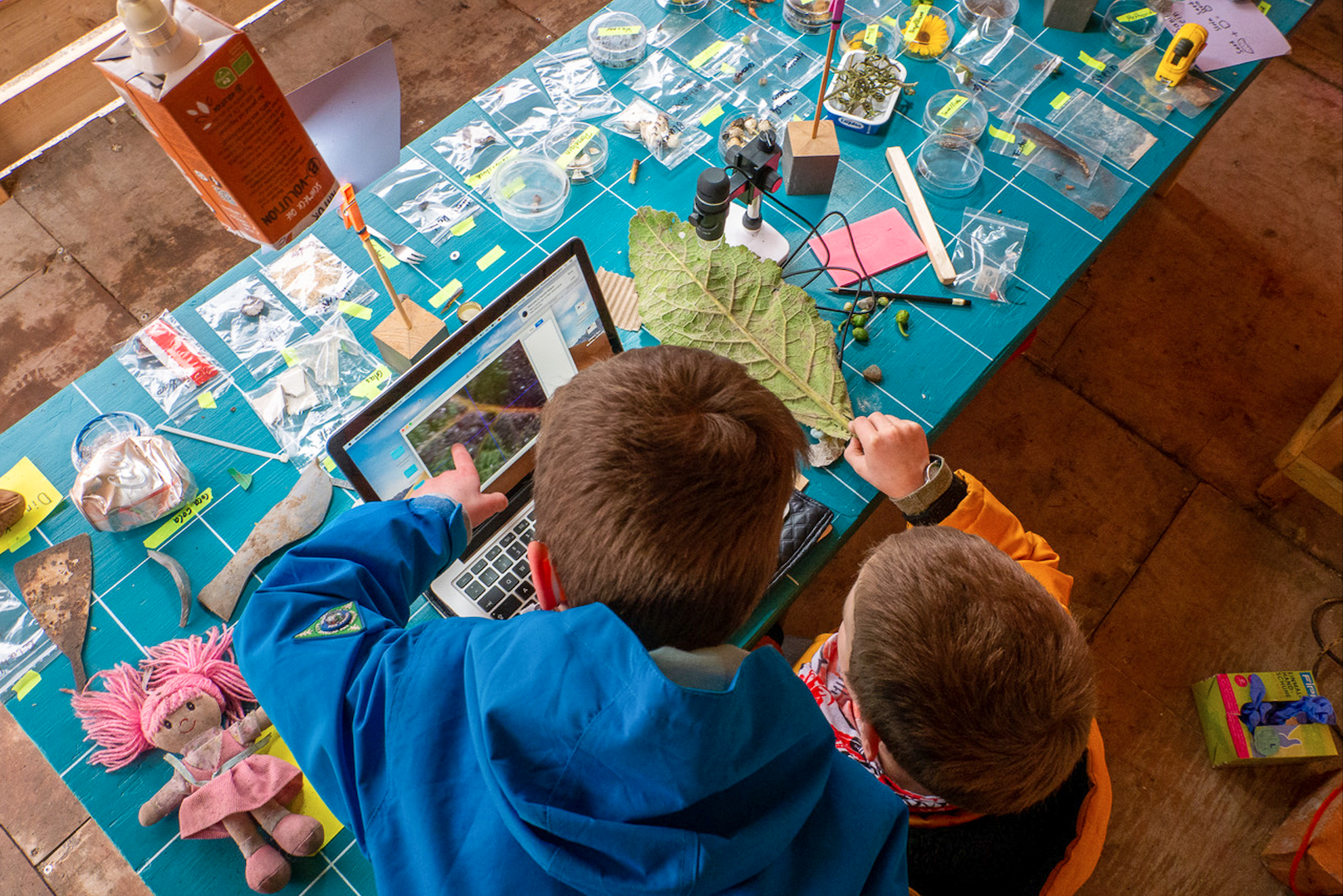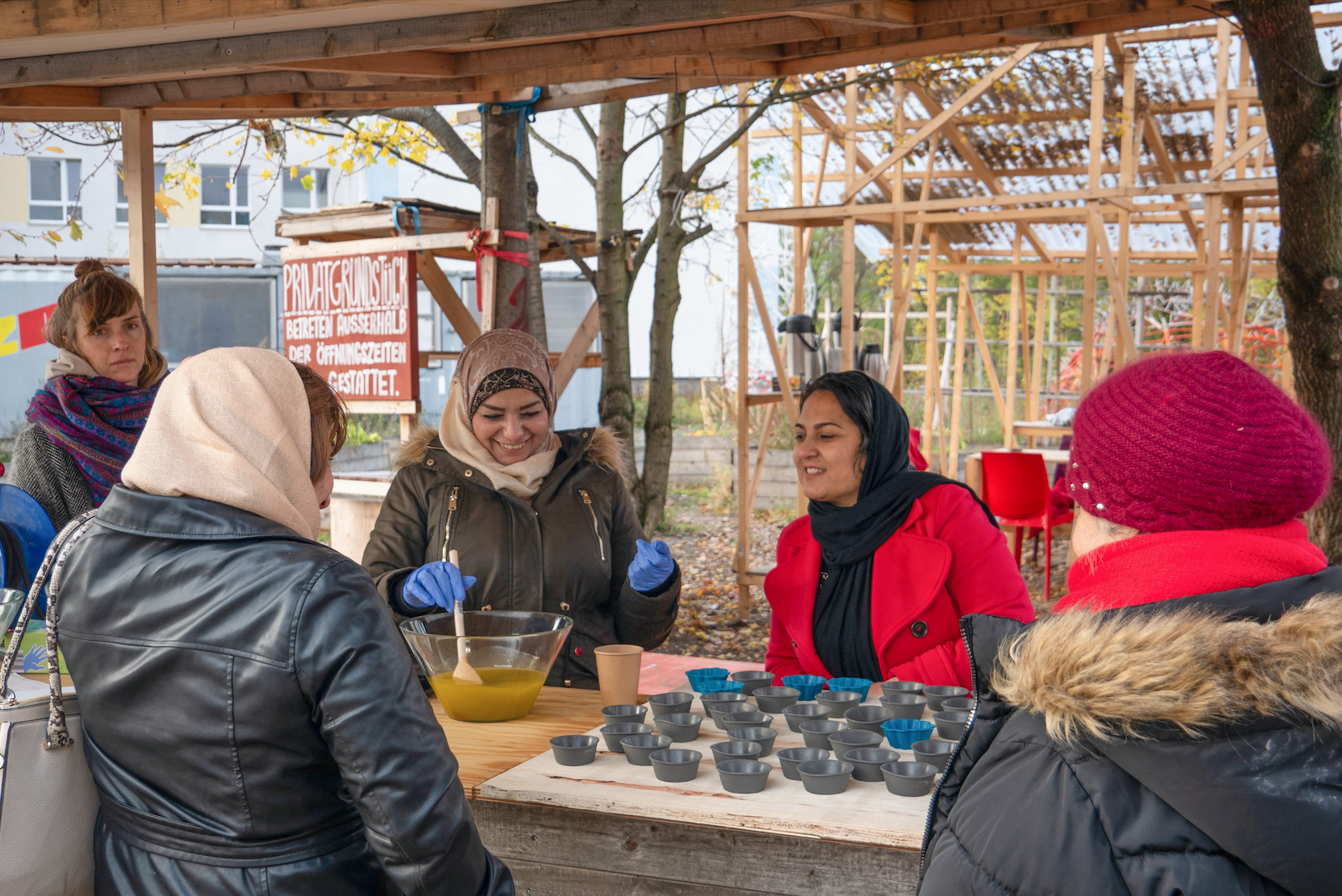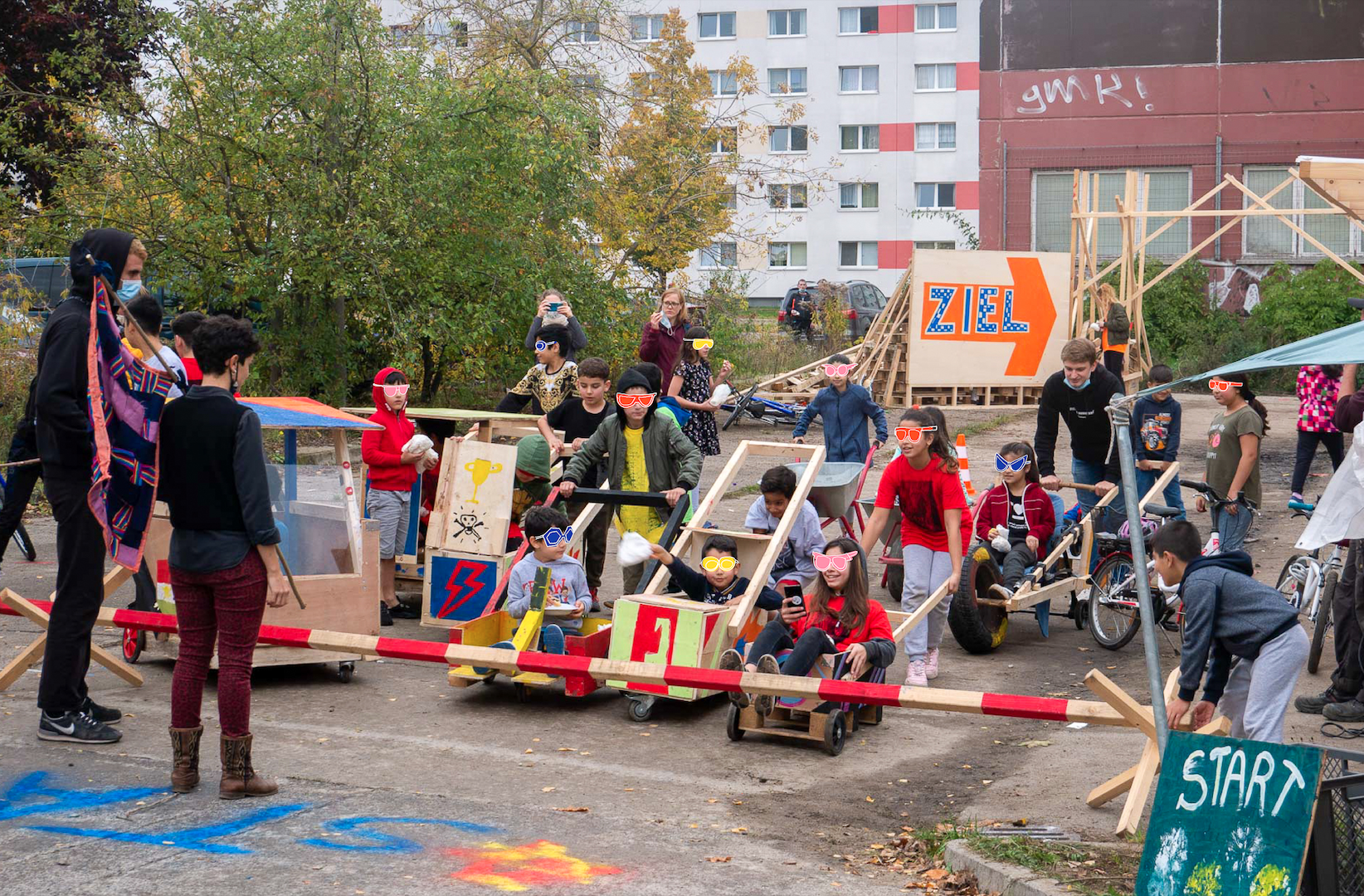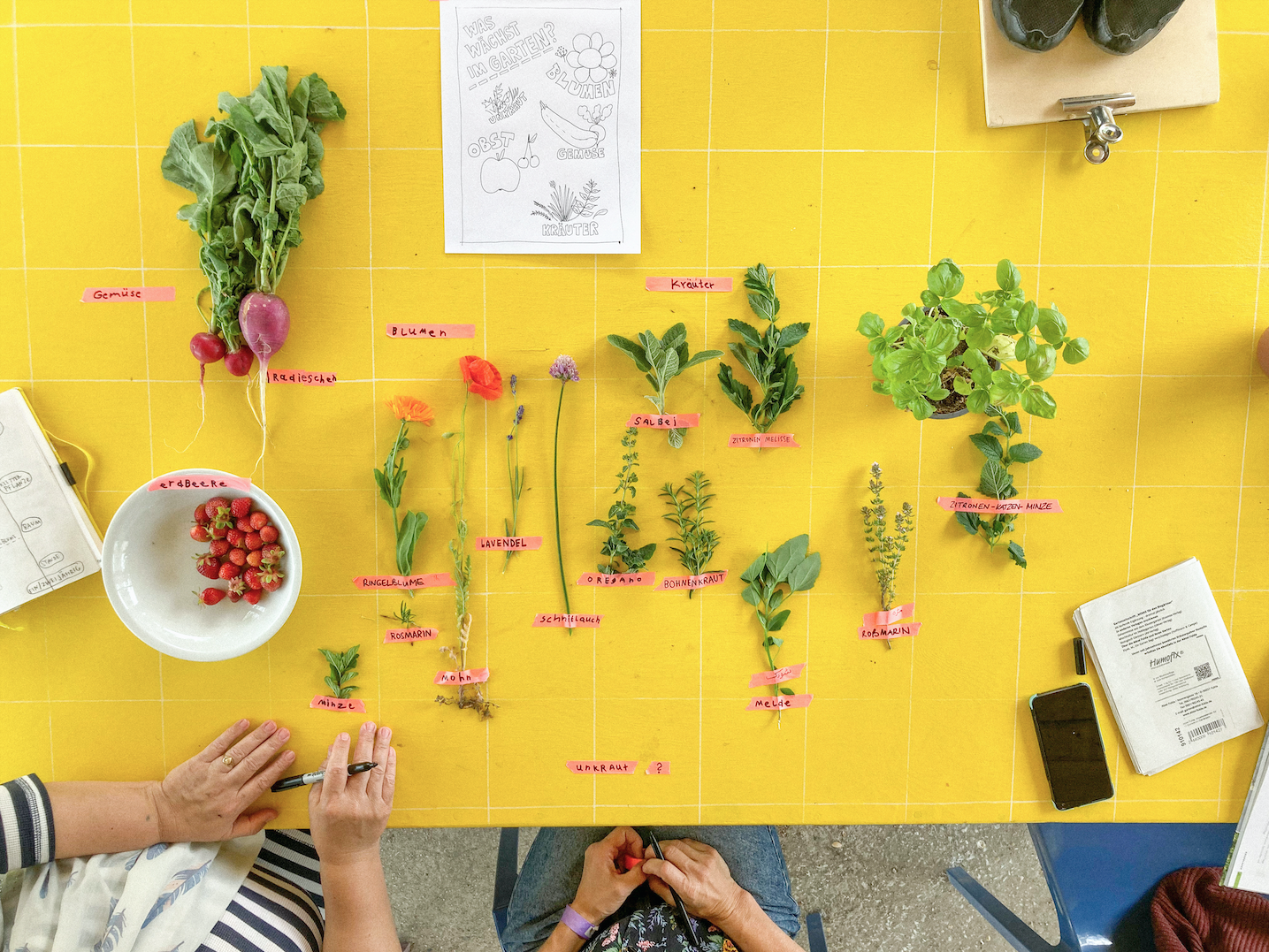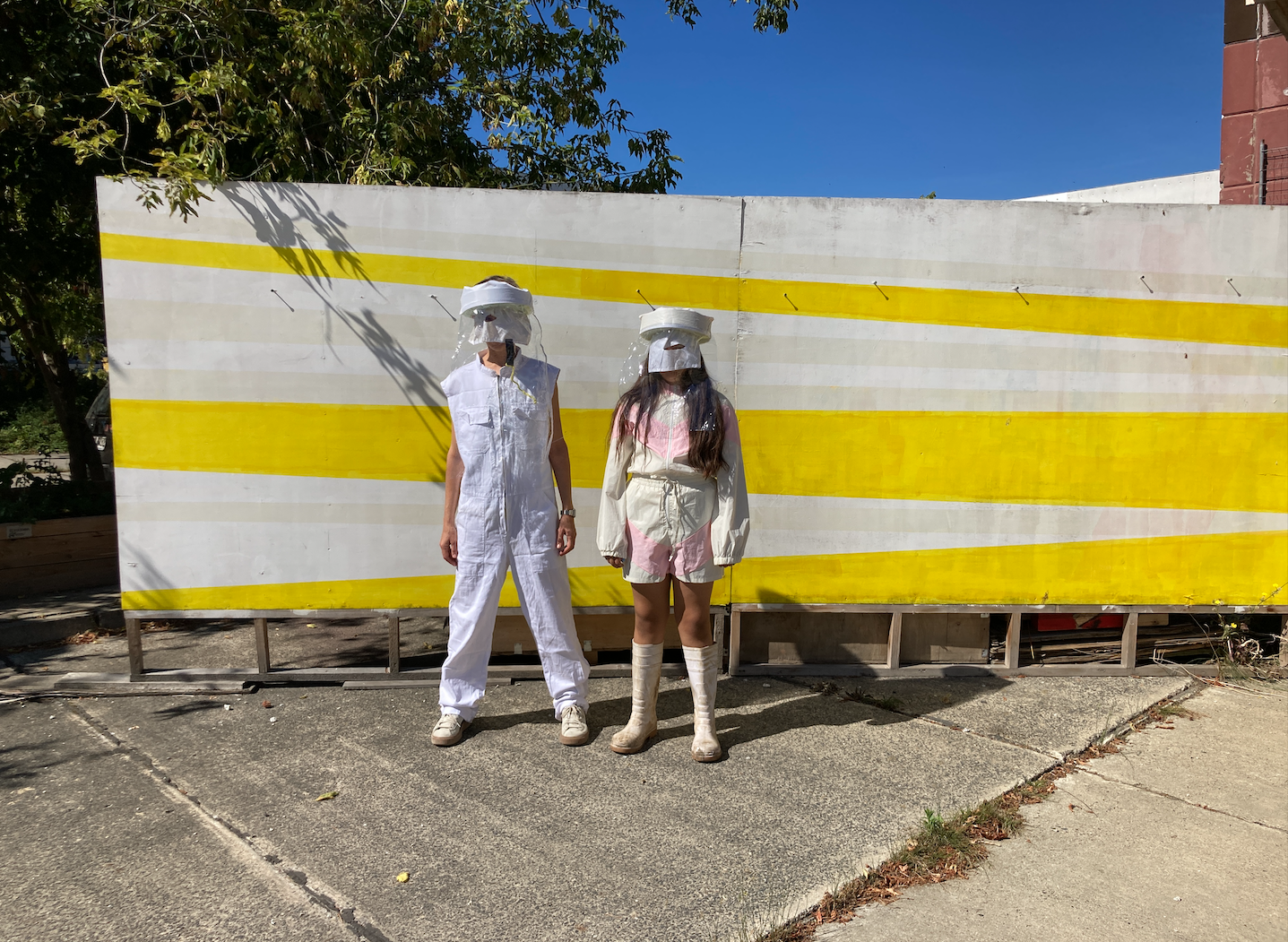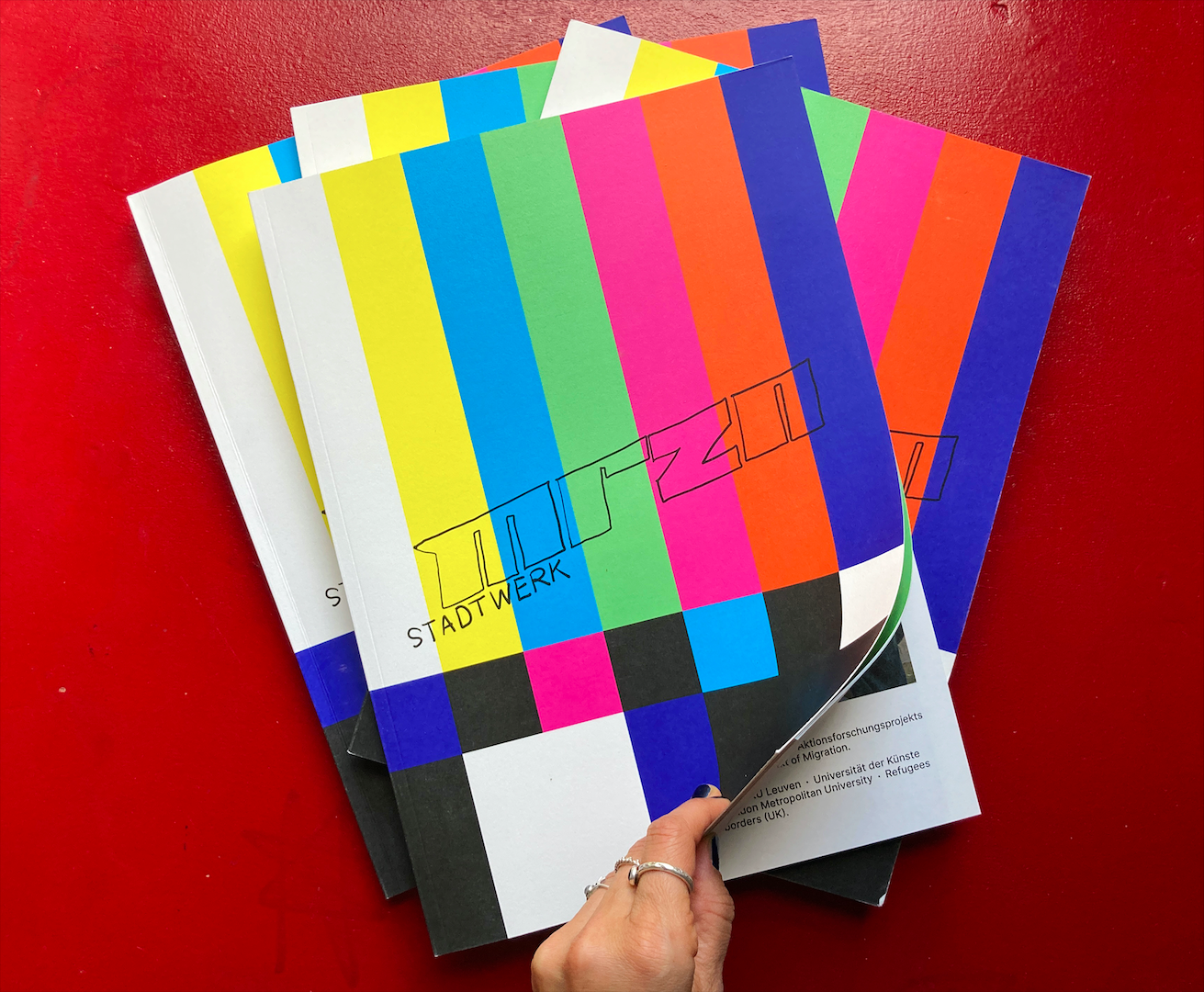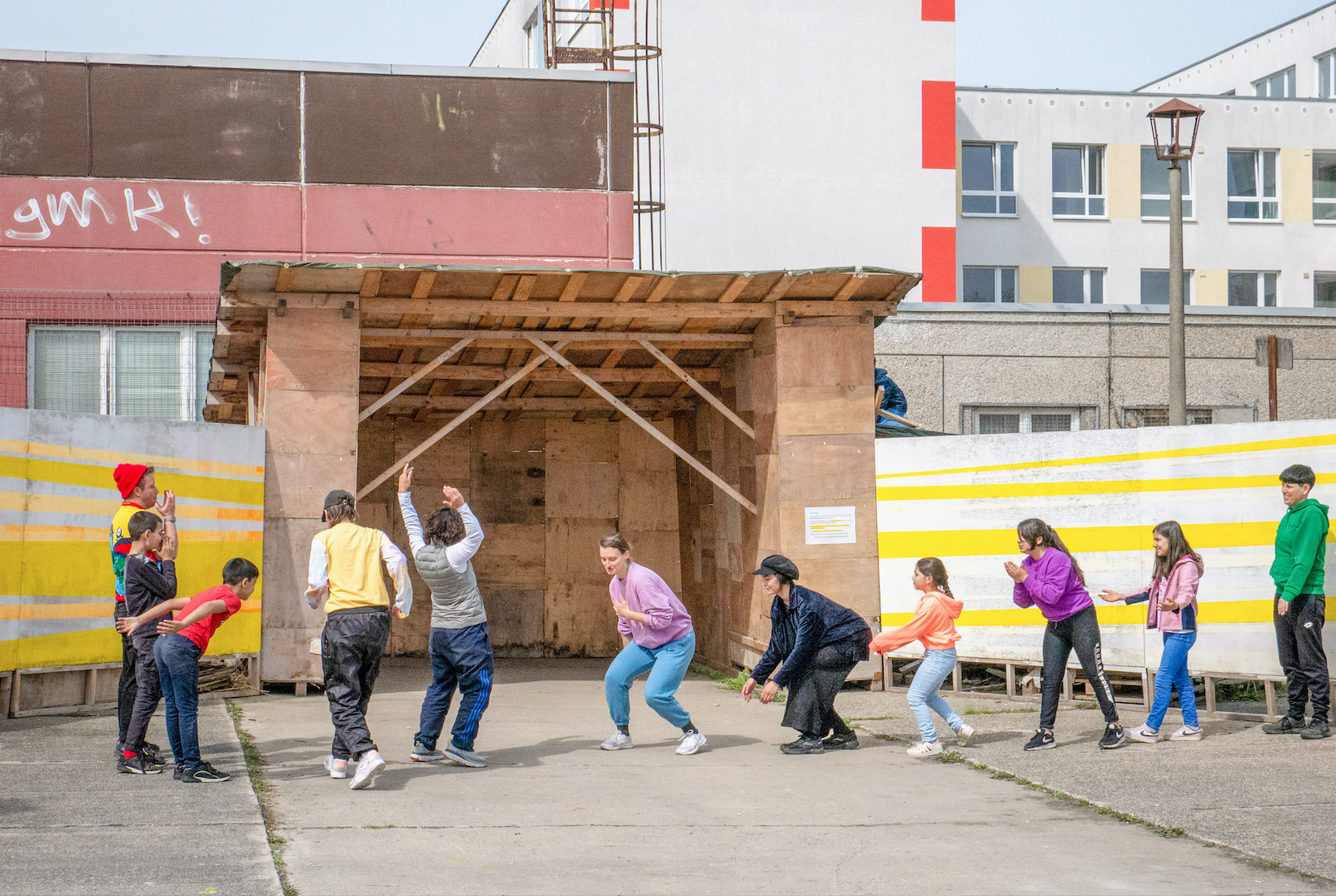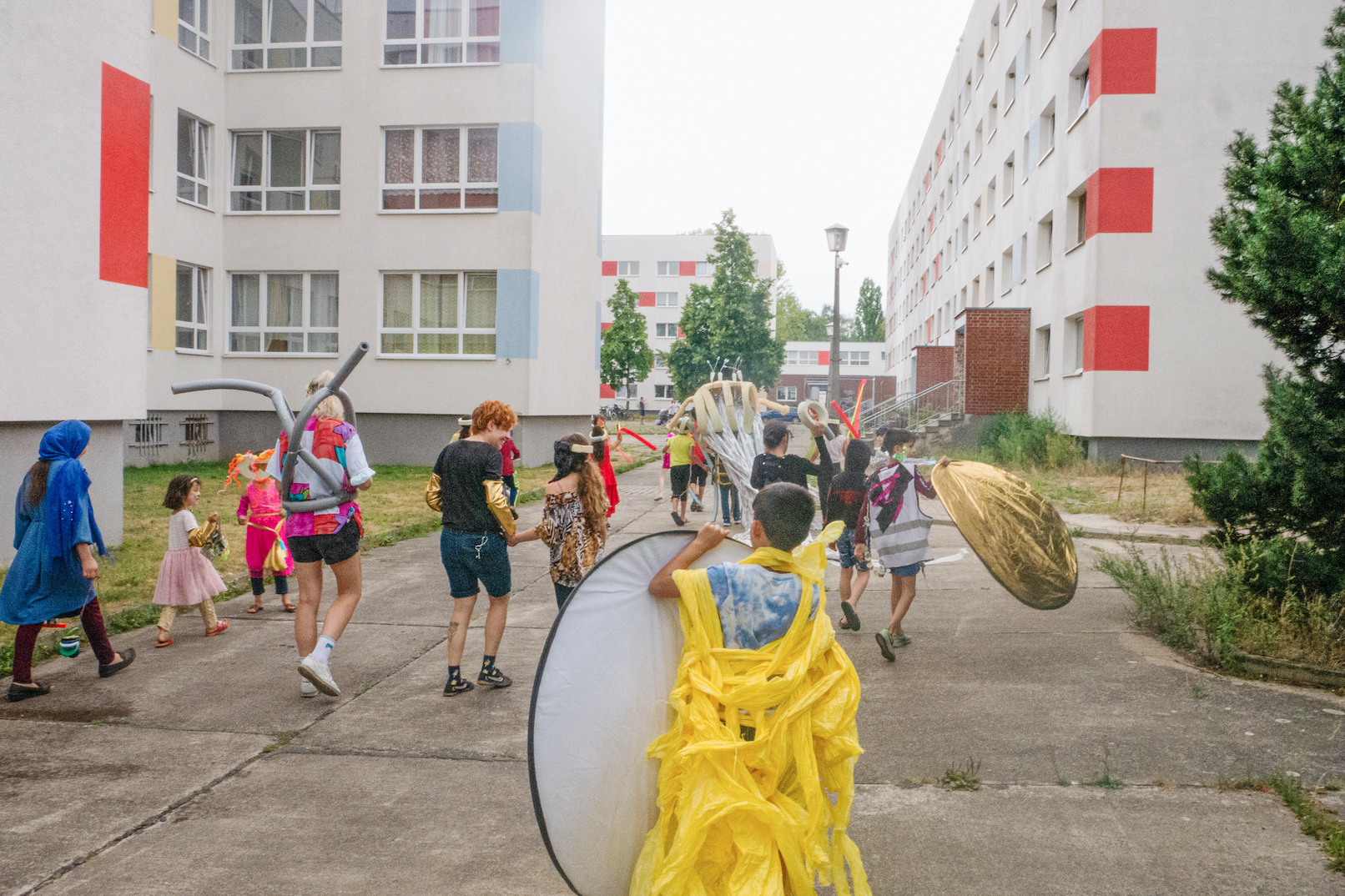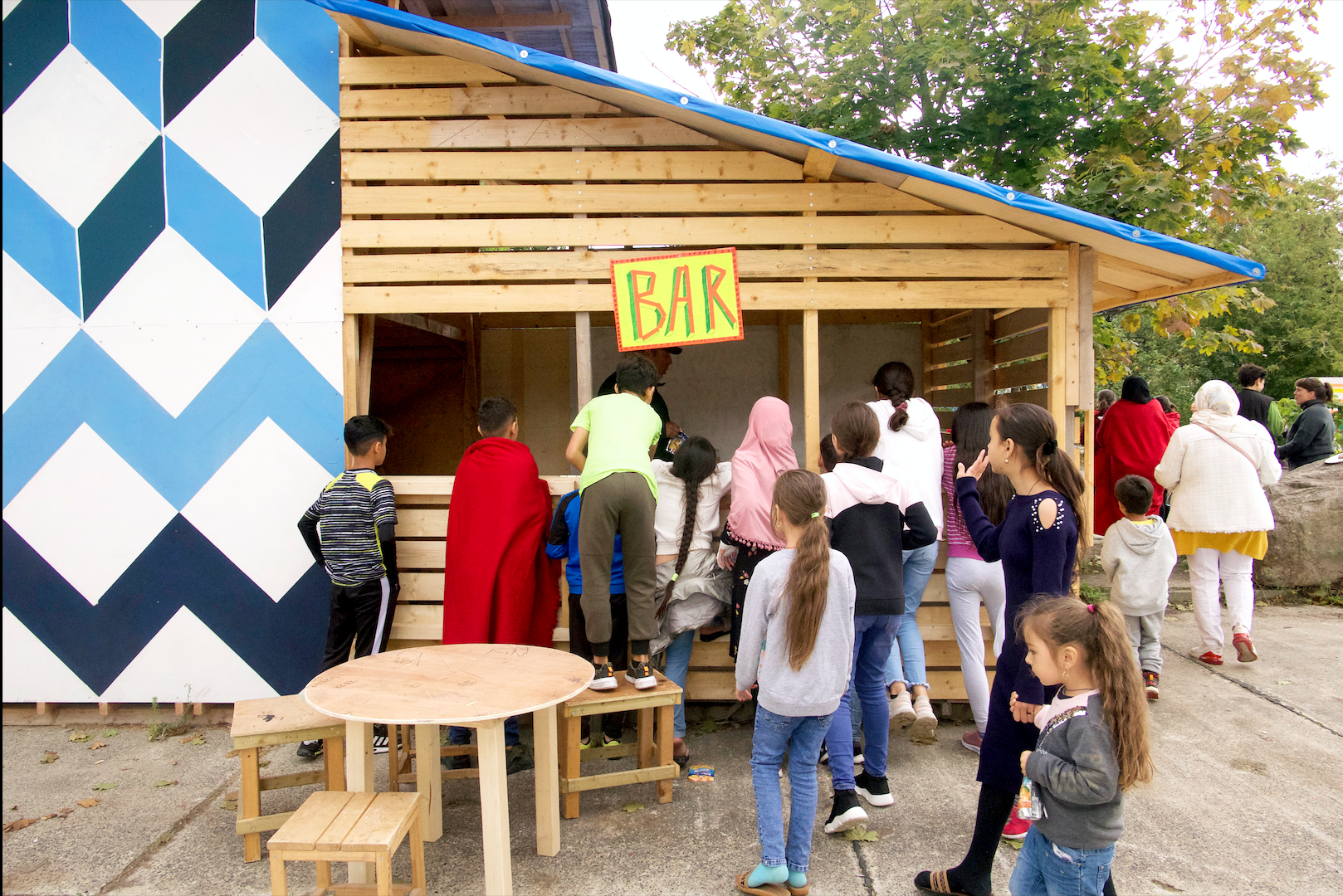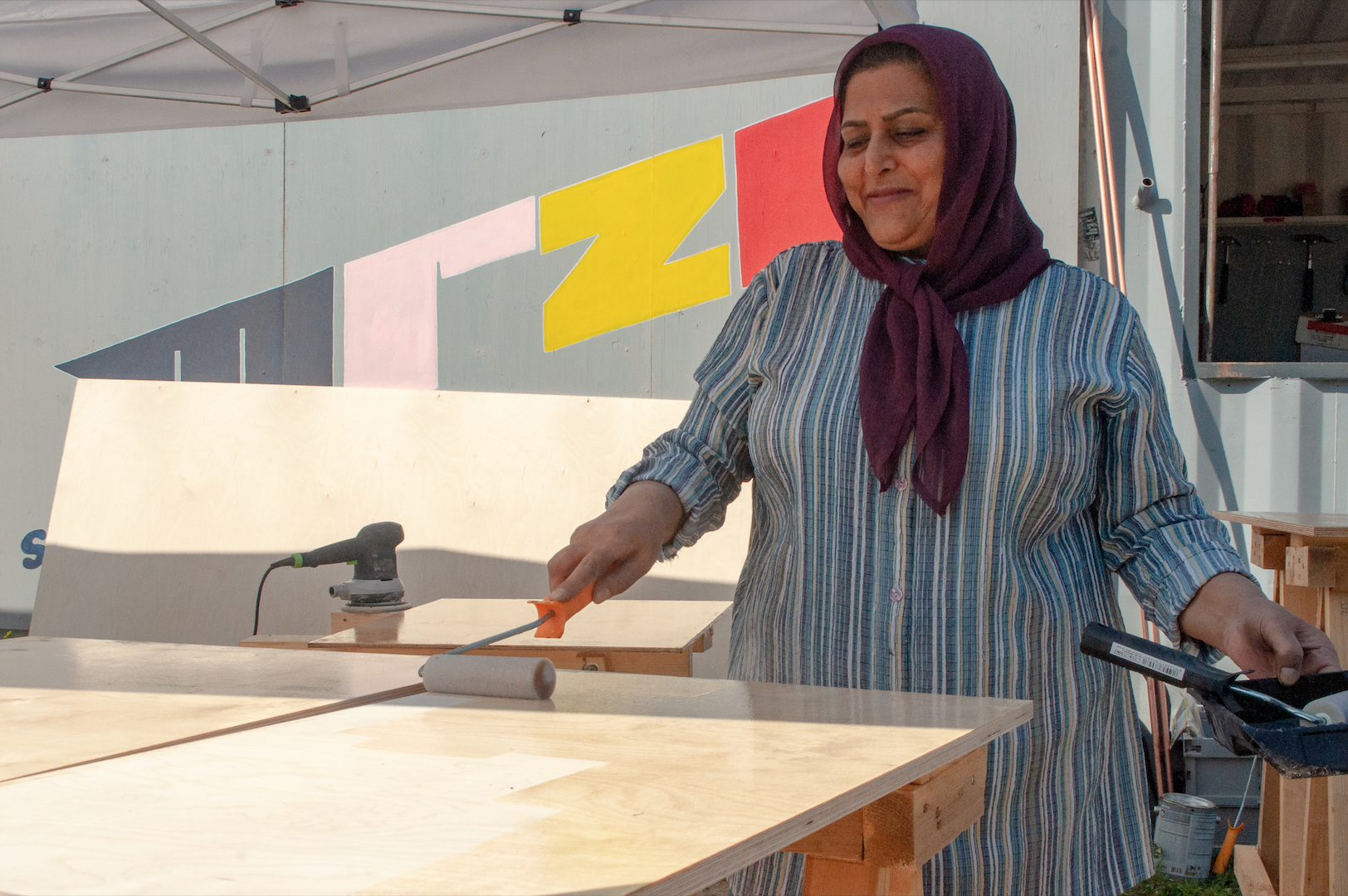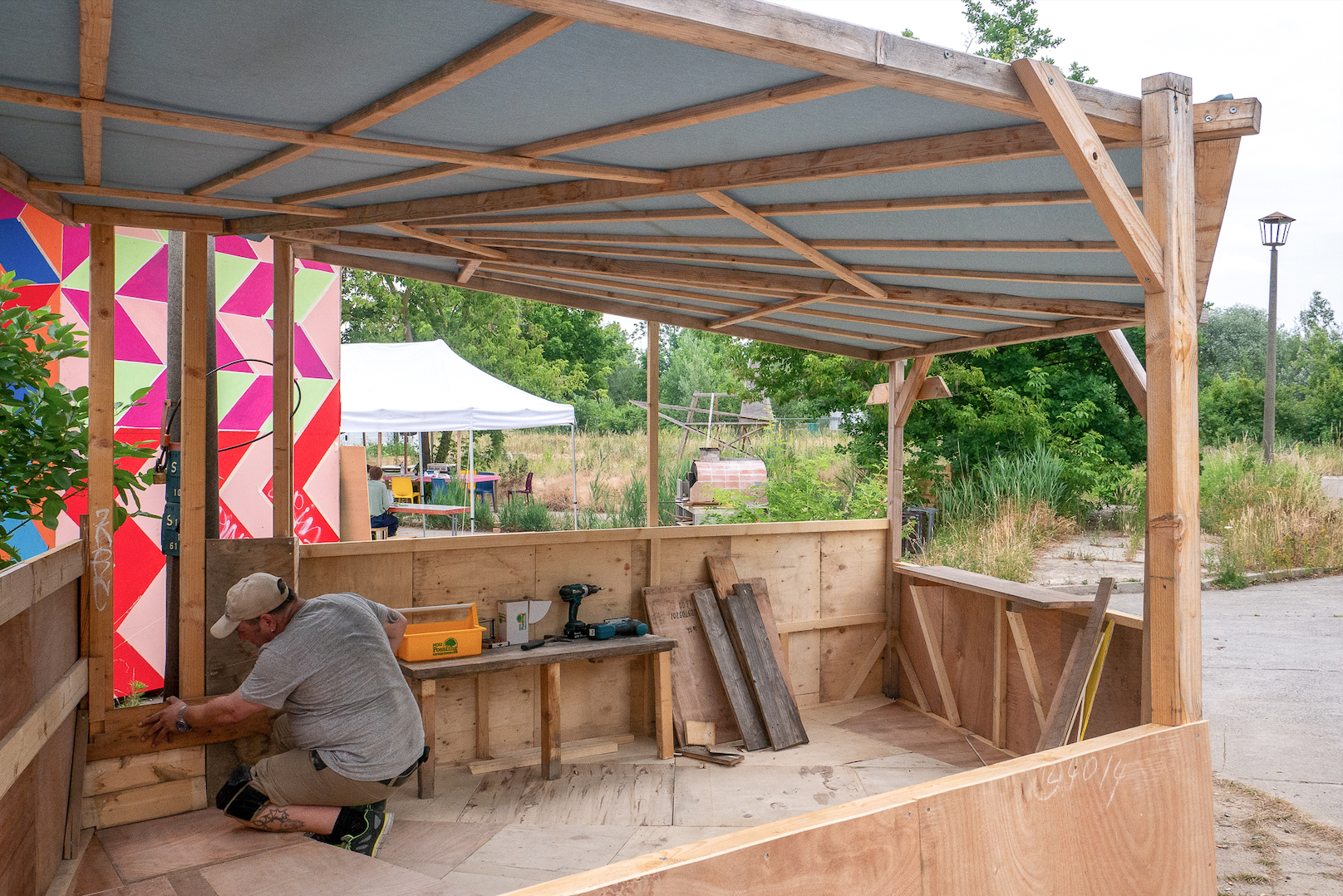2020 – 2022: STADTWERK mrzn. Art Direction with Todosch Schlopsnies (ftts, artist duo) A pilot project within a series of urban laboratories aimed at exploring the potential of ‘urban practice’ on the outskirts of Berlin.
A project of S27, in cooperation with Berlin Mondiale. Part of “Initiative Urbane Praxis”.
Funded by Lotto Foundation and ESF, European Social Fund.
„Wer macht auf?” – Um ein wenig mehr zu verstehen, wie wir dort auf der Brache gelebt und gearbeitet haben, versuchen wir, unser „Morgenritual” zu schildern: Nach rund 70 Minuten mit dem Rad quer durch die Stadt sind wir angekommen. – Es gibt zwei unterschiedliche Vorhängeschlösser an der Tür unseres Containers. Um eine der Ösen zu öffnen, in denen die Schlösser hängen, braucht man einen Stein, weil sie klemmt. (Lustigerweise liegt seit vielen Monaten genau solch ein Stein rechts neben dem Eingang im Gras – niemand nimmt ihn weg; er wird da ja benötigt!) Ist die Tür geöffnet, folgt als nächster Schritt meist, das Wasser anzustellen, das wir von unseren Nachbarn über einen Außenhahn bekommen: Erst den Schlauch an den Hahn und dann mit einem Schraubenzieher die Armaturen aufdrehen (Es gibt keinen Griff – und da von dem vielen Auf- und Zugedrehe keine Zange mehr greift, haben wir mit der Flex einen Schlitz hineingesägt.) Wenn das Wasser läuft, setzen die meisten von uns einen Kaffee auf für die Anderen, die bald kommen werden… Als Nächstes muss die Tür vom „Kinderhaus” aufgeschraubt werden. (Dort gibt es kein Schloss – irgendwie hat es sich etabliert, dass die Schiebetür immer zugeschraubt wird…) Akkuschrauber mit T30 Bit – zwei lange Schrauben seitlich im Rahmen und eine an der oberen rechten Seite.
Danach: Stühle rausstellen. Wir haben ca. 15 Plastikstühle (und nocheinmal soviel selbstgebaute Hocker, aber die benutzen meist die Kinder…), die wir unter das zentrale Dach bringen, wo sich auch die Außenkochstelle und unser Gemeinschaftsgarten befindet. – Die Tische bleiben über Nacht draußen (sie sind zu groß – die klaut keiner!) – Danach kommt meist noch der „Baumarkt” an die Reihe, auch ein selbstgebauter „Pavillon”, in dem sich die meisten Materialien befinden, mit denen wir arbeiten.
Dann folgt meist ein kleiner Spaziergang über die Fläche, um Müll einzusammeln und Flaschen wegzuräumen… (Der Ort wird von vielen Leuten genutzt, auch wenn wir nicht da sind!) – Meist kommen jetzt auch schon die Anderen, freuen sich über den Kaffee, und wir besprechen kurz, was so anliegt – Wer kocht, ob wir Besuch bekommen, oder ob gegossen werden muss… Dieses “Rat holen”, wer etwas „weiss”, gerade wie denkt oder auf dem Herzen hat, ist sehr wichtig und färbt den Tag!
Wir haben mobiles Internet und einen Drucker – er steht neben dem Kühlschrank auf dem Tresen, über dem unsere Werkzeuge hängen. Damit wir eine Art „Grundordnung” halten können, die selbsterklärend ist, markieren von Hand gemalte Silhouetten den jeweils für sie vorgesehenen Aufbewahrungsort.
All das ist „CARE-Arbeit”! – Wir teilen die Aufgaben, die Verantwortung – und auch Freude und Ärger. Dahinter steht eine Haltung, eine Einstellung, Mitgefühl und Engagement. Vor dieser Offenheit verschwimmen die Ressentiments und „Grenzen” – der Ort wird zum lebendigen Treffpunkt und lädt ein zum Verweilen, gemeinsam kreativ zu werden, Sachen auszuprobieren und zu lernen. (…)
“Who is opening mrzn today? – To understand a bit more about how we lived and worked on the “Brache” (wasteland), we try to describe our morning ritual: After about 70 minutes of biking across the city, we arrived. – There are two different padlocks on the door of our container. To open one of the loops where the locks hang, you need a stone because it’s stuck. (Interestingly, for many months there has been exactly such a stone lying to the right of the entrance in the grass – no one takes it away; it’s needed there.) Once the door is open, the next step is to turn on the water that we get from our neighbors through an outdoor tap: First, attach the hose to the tap, and then turn on the fittings with a screwdriver (There’s no handle – and since no pliers grip from all the turning, we sawed a slot into it with the grinder.)
When the water is running, most of us make coffee for the others who will soon arrive… Next, the door of the “children’s house” has to be unscrewed. (There’s no lock there – somehow it has become established that the sliding door is always bolted…) Cordless drill with a T30 bit – two long screws on the side of the frame and one on the upper right side.
After that: set up chairs. We have about 15 plastic chairs (and another self-made stools, but the children usually use those…), which we bring under the central roof, where the outdoor kitchen and our community garden are located. – The tables stay outside overnight, they’re too big, nobody steals those! Then comes the “hardware store,” also a self-made “pavilion,” where most of the materials we work with are kept.
Then we make a short walk across the area to collect garbage and bottles… The place is used by many people, even when we’re not there! – Usually by now the others are arriving, happy about the coffee, and we briefly discuss what needs to be done: who’s cooking, whether we have visitors, or if watering is needed… This “seeking advice,” sharing what one “knows,” is very important and colors the day!
In the container we have mobile internet and a printer, it sits next to the fridge on the counter, above which our tools hang. So that we can maintain a kind of “basic order” that is self-explanatory, hand-painted silhouettes mark the designated storage space for each item.
All of this is CARE work! – We share the tasks, the responsibility and also joy and frustration. Behind this openness, resentments and “boundaries” blur, the place becomes a vibrant meeting point and invites people from different ages and backgrounds to stay, to do things together, to try out and to learn. (…)”
